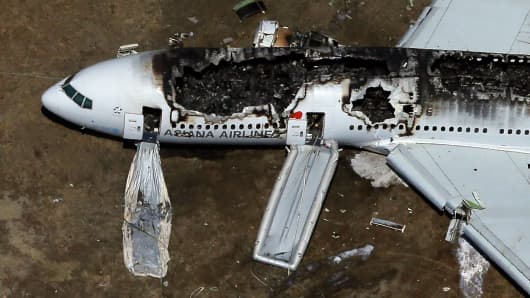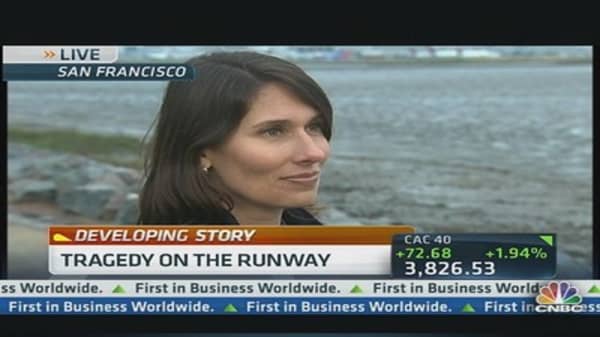Lee had 9,700 hours of experience flying other jetliners—the Airbus A320 and the Boeing 737 and 747, Asiana said. The co-pilot had more than 3,000 hours on the 777, a twin-engine, wide-body jet, the airline said.
The plane, Asiana Flight 214 from Seoul, South Korea, clipped a seawall as it came in for a landing Saturday morning, then bounced along the runway before coming to rest in a field and catching fire, according to passengers and witnesses.
Two teenagers—Chinese girls on their way to summer camp in the United States—were killed. Authorities are investigating whether a fire truck ran over one of the girls as it raced to help.
It was the first fatal crash in the 18 years that the 777 has been in service. More than 180 people were injured.
Federal investigators said Sunday that the plane came in "significantly below" its intended speed of about 150 mph and that the pilot and co-pilot tried to abort the landing a second and a half before it crashed.
While it was Lee's first time landing a 777 at San Francisco International, a South Korean transport ministry official, Choi Seung-youn, told Reuters that Lee had flown there 29 times on other aircraft.
More From NBC News:
Fire Truck May Have Run Over Plane Crash Victim
Pilots Tried to Abort Landing Moments Before Crash
Electronic Landing System Was Off During Plane Crash
Asked on TODAY whether the pilot's inexperience landing the 777 at that airport might have been a factor, Hersman said investigators would consider it, but she added that it's not unusual for pilots to make their first landing an at airport.
"They fly all around the world. There are a lot of different destinations," she said. "What you want to do is have a crew that's proficient in the aircraft and works together well, that you have good crew pairings. That's important."
The news agency Yonhap quoted a South Korean official saying that "transition training" status is common and within the government's guidelines.
The training "happens around the world every day of the week," said Adrian Gjertsen, an aviation consultant and director of the British-based Airsupport Aviation Services.





